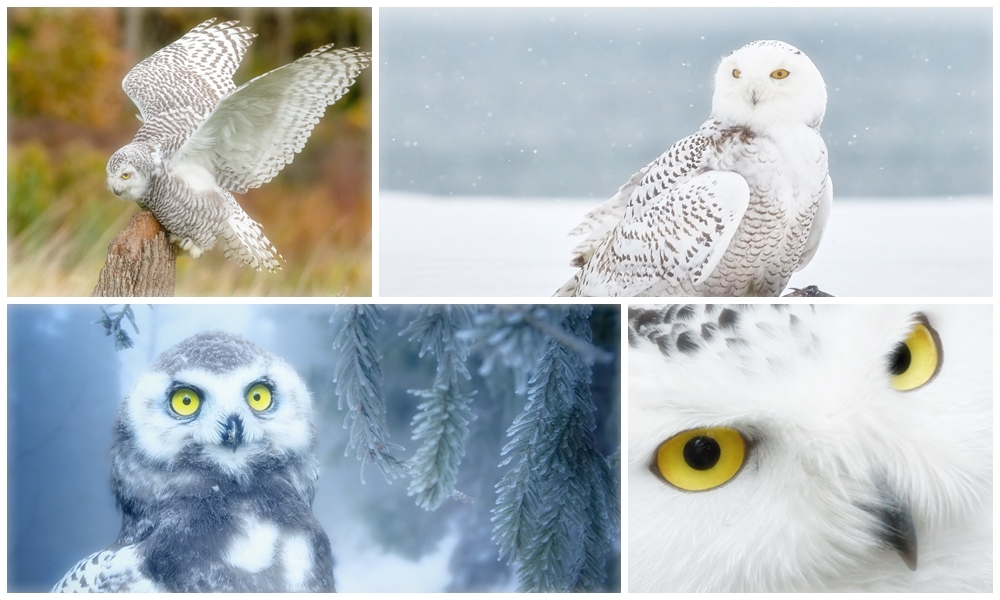Here are 15 interesting facts about Snowy Owl.
-
The Snowy Owl (Nyctea scandiaca) is a massive bird that measures between 54 and 70 cm long and wing span of 143 to the size of 167 centimeters.
-
The Snowy Owl is white in plumage (heavily colored with blackish markings in females and young males, and just a little in the old male) making this nomadic open-country arctic bird unmistakable. Be wary of glimpses of the less tiny White-breasted Barn Owl or even unusually pale (heavily worn) short-eared Owl which can lead to confusion in the species.
-
Snowy Owl regularly hunts by day but is mostly crepuscular (less active in the evening).
-
On the ground, it usually sits in a straight position, and sometimes sits on its breasts, looking cat-like.
-
In spite of their white or mostly white plumage, it is often difficult to spot them on the stony tundra amid the numerous white rock formations (this particularly applies to young females who appear rather grey when viewed from the distance).
-
The snowy owl flight is very fast and has powerful wings beats. The wings appear more pointed than those of the other large species of owls.
-
In pursuit of flying prey, they are incredibly swift and agile and agile, almost like raptors. Males older than adults have just some black marks on their plumage but the younger birds are more mark their plumage.

The Facts of Snowy Owl – The Snowy Owl is white in plumage (heavily colored with blackish markings in females and young males, and just a little in the old male) making this nomadic open-country arctic bird unmistakable. -
Immature has a lot in common with an adult female. But the young females are even more extensively and heavily barred in blackish (looking somewhat grey from an extended distance).
-
Whereas the young male has a narrower blackish barring than females of adult age with a small patch of darker downy feathering that is brownish-grey, sometimes visible on the neck’s hind end (but usually not visible).
-
The young bird is fledged that is young is immature but has some dark brownish-gray, downy feathering on the crown and sides of the neck, head wings, and underparts. The facial disc that is pre-fledging is blackish.
-
The call of the Snown Owl is quiet from its nest. However, the call to advertise is a loud muffled, hollow ‘gawh’ which is somewhat reminiscent of the Great Black-backed Gull.
-
But the alarm call of male a loud, grating ‘krek-krek-krek-krek-krek-krek’, very like call of agitated female Mallard; that of female similar, but higher-pitched.
-
The Female also makes a repeating mewing sound, which is shrill and loud”, which is interspersed by high-pitched, piping’see-uuuw or’see-uuw-eee’.
-
The habitats show that it’s not a common species; however local concentrations occur during good lemming years. In addition to the mapped range, it has also bred Iceland, S Norway, and Shetland. In winter, the bird can disperse further south than the map areas.
-
Tundra with raised hummocks rocks or tussocks to use as lookouts, covers, and nesting sites. In winter, it is found in grassland, marshes, and fields. Related Reading – Collared Scops Owl (Otus lettia)

The Facts of Snowy Owl (Nyctea scandiaca) shows it is a massive bird that measures between 54-70 cm long and wing span of 143 to the size of 167 centimeters.






